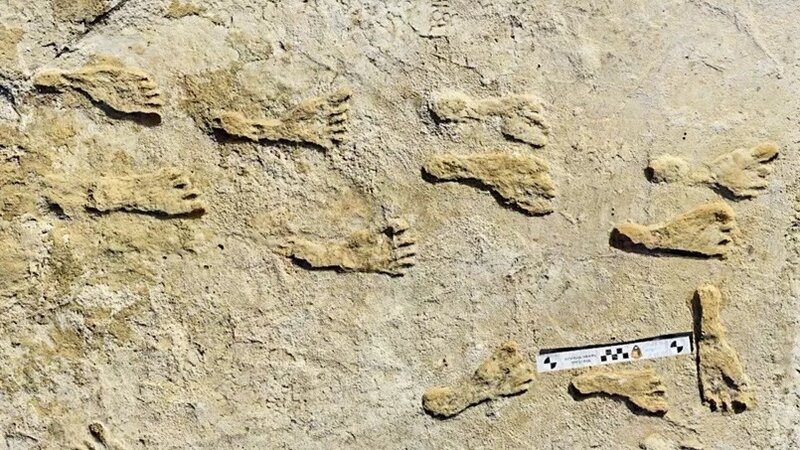https://www.npr.org/2023/10/07/ [login to see] /fossil-footprints-in-new-mexico-suggest-humans-have-been-here-longer-than-we-tho
How long have humans lived on the American continent?
For decades, one prevailing answer was perhaps 14,000 years, based largely on the age of early human stone tools known as Clovis points, first discovered in Clovis, NM.
But a new analysis of fossilized human footprints adds weight to the case for a longer human history in the Americas.
The footprints are among thousands made by humans, mammoths, giant sloths and others in White Sands National Park, an ethereal landscape in southern New Mexico where waves of white gypsum dunes lap across the vast Tularosa basin.
That basin held a lake during the last Ice Age, and its dried-out banks preserve the prints.



 National Park Service
National Park Service Science
Science


